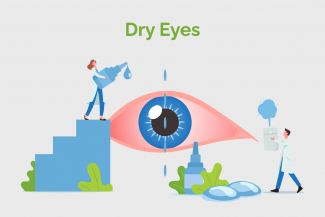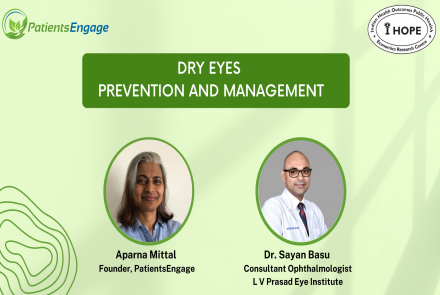Dry eye disease is a growing public health problem and one of the most common conditions seen by eye practitioners. It is an extremely common and often unrecognised disease affecting millions of people. It is a multifactorial disease of the tears and ocular surface that results in symptoms of discomfort, visual disturbance and tear film instability with potential damage to ocular surface.

What leads to dry eyes:
- Prolonged use of contact lenses leads to dry eyes. Soft contact lenses actively deplete the rear layer to maintain their hydration level.
- One of the most important cause of dryness these days is extensive use of computer and mobile screens. Studies have shown that excessive use of screens enhances the evaporation of tears along with decreased blink rate.
- Dry eyes are also commonly seen in old age with more preponderance in women, particularly in peri and post-menopausal age. Sex hormones influence the ocular surface conditions through their effects on tear secretions and Meibomian gland function. It has been found that post-menopausal women who use hormone replacement therapy, especially oestrogen alone have high prevalence of dry eyes disease.
- Refractive surgeries, i.e. correction of myopia by procedures such as LASIK and PRK also cause dry eyes though, it is for a short period.
- Various factors like low relative humidity conditions in office environment, A/C cars, airplane cabins, pollution and extreme hot and cold weather also contribute to the dry eyes condition.
- Vitamin A deficiency, chemical, thermal and radiation injuries to the conjunctiva, trachoma, cause instability of the tear film, leading to dry eyes.
- Certain systemic medications such as anti-histaminic, certain anaesthetic agents, and certain anti-anxiety drugs, on prolonged use cause mild dry eyes. Long term use of eye-drops having preservatives, like benzalkonium chloride contribute to dry eyes disease because of its established toxicity.
- Lid conditions like chronic blepharitis also cause dry eyes.
Changed
19/Jun/2025
Community
Condition

















